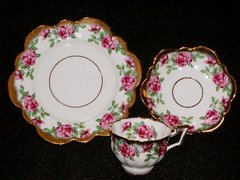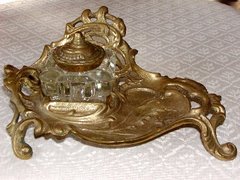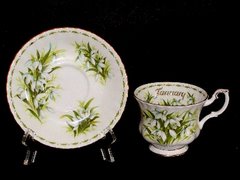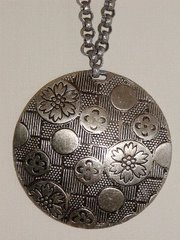
Postcards are more than just a method of communication, they’re little bits of history. They show buildings and cityscapes as they appeared in the past; they provide images of clothing worn and lifestyles in bygone eras; they give a running progression of transportation methods through the decades. We see holidays celebrated, landmark events commemorated, and important people venerated. Vintage and antique postcards truly are windows to the past.
This is part of the allure of collecting postcards. If the card was mailed, it has the extra added interest of containing a postmarked old stamp. In addition, many collectors have told me that they also enjoy reading the personal messages written on the back, which give insights into the lives (and sometimes loves!) and travel habits of people from all walks of life.
Postcards also are a very popular and very manageable collection. Because they’re small and thin, hundreds can be kept stored together in a single box; they can also be displayed in acid-free photo albums, or even framed and hung as wall décor. Organizing is easy and is usually done by category. Besides the regular flat cards, there are fold-out postcards that open up to reveal an accordion-style length of pictures.
Many postcards are quite inexpensive, but some of the examples in certain categories, like Halloween, can run into the hundreds of dollars for a single postcard. In order to afford those coveted pieces, many collectors build a nice collection of less expensive cards, then sell off duplicates or others that they no longer want and gradually acquire the postcards of their dreams.
If your collection includes some old unused postcards, you’ll probably interested in attaching a date to them, which is a bit more difficult without a postmark to guide you. According to the web site Postcard Values, the first commercially produced postcards appeared in the United States in 1893 and were sold at the Columbian Expedition in Chicago. Here are the date guidelines given by Postcard Values:
~ “Private Mailing Card, Authorized by Act of Congress on May 19, 1898” appeared on the back of American postcards up until December 24, 1901.
~ A postcard without a line down the back to divide the sender’s message from the recipient’s address indicates that the postcard was printed before 1907. No messages, only addresses were permitted on the backs of postcards until March of 1907.
~ Old postcards that say Printed In Germany were made up until 1915, when WWI caused German presses to close.
~ A white border around the picture on the postcard dates it between 1915 and 1930.
~ Linen paper with vivid colors was used for postcards between 1930 and 1944. However I have seen some linen postcards from the 1950s as well.
~ Postcards with shiny, color photographic images were made from 1945 to the present. There are postcards with actual photographs, but most of these are black and white and usually you’ll find the type of photographic paper used on the back of the card.
~ Some unused postcards include the stamp price in the stamp area; this will give you a clue as to when the postcard was printed. See the Rate Chart at Postcard Values for this information.
There are plenty of postcard shows around the country; start attending these and you’ll not only become quite educated in the subject, but you’ll also find hundreds of thousands of selections at your fingertips. There are also postcard collector WebRings online so you can chat and exchange information with other people who share your passion. And check out the informative website, About Postcards here at Blogspot for more specific information about particular types of postcards.
This is part of the allure of collecting postcards. If the card was mailed, it has the extra added interest of containing a postmarked old stamp. In addition, many collectors have told me that they also enjoy reading the personal messages written on the back, which give insights into the lives (and sometimes loves!) and travel habits of people from all walks of life.
Postcards also are a very popular and very manageable collection. Because they’re small and thin, hundreds can be kept stored together in a single box; they can also be displayed in acid-free photo albums, or even framed and hung as wall décor. Organizing is easy and is usually done by category. Besides the regular flat cards, there are fold-out postcards that open up to reveal an accordion-style length of pictures.
Many postcards are quite inexpensive, but some of the examples in certain categories, like Halloween, can run into the hundreds of dollars for a single postcard. In order to afford those coveted pieces, many collectors build a nice collection of less expensive cards, then sell off duplicates or others that they no longer want and gradually acquire the postcards of their dreams.
If your collection includes some old unused postcards, you’ll probably interested in attaching a date to them, which is a bit more difficult without a postmark to guide you. According to the web site Postcard Values, the first commercially produced postcards appeared in the United States in 1893 and were sold at the Columbian Expedition in Chicago. Here are the date guidelines given by Postcard Values:
~ “Private Mailing Card, Authorized by Act of Congress on May 19, 1898” appeared on the back of American postcards up until December 24, 1901.
~ A postcard without a line down the back to divide the sender’s message from the recipient’s address indicates that the postcard was printed before 1907. No messages, only addresses were permitted on the backs of postcards until March of 1907.
~ Old postcards that say Printed In Germany were made up until 1915, when WWI caused German presses to close.
~ A white border around the picture on the postcard dates it between 1915 and 1930.
~ Linen paper with vivid colors was used for postcards between 1930 and 1944. However I have seen some linen postcards from the 1950s as well.
~ Postcards with shiny, color photographic images were made from 1945 to the present. There are postcards with actual photographs, but most of these are black and white and usually you’ll find the type of photographic paper used on the back of the card.
~ Some unused postcards include the stamp price in the stamp area; this will give you a clue as to when the postcard was printed. See the Rate Chart at Postcard Values for this information.
There are plenty of postcard shows around the country; start attending these and you’ll not only become quite educated in the subject, but you’ll also find hundreds of thousands of selections at your fingertips. There are also postcard collector WebRings online so you can chat and exchange information with other people who share your passion. And check out the informative website, About Postcards here at Blogspot for more specific information about particular types of postcards.
You can find all kinds of ephemera at Collector's Cottage - stop by for a visit!








